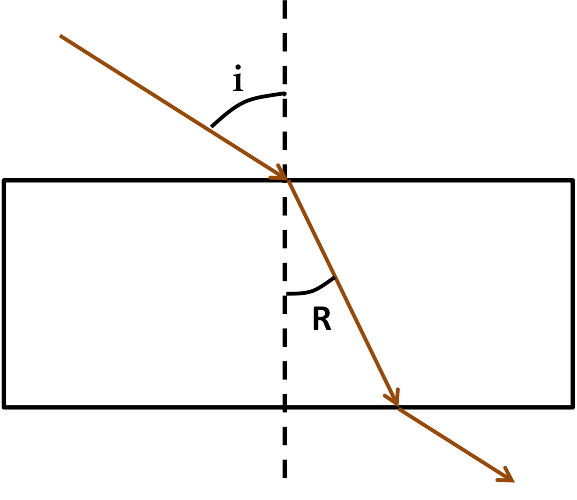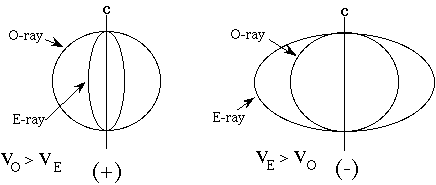 Optical Mineralogy
Optical Mineralogy
Refractive Index(η) of a substance = velocity of light in air / velocity of
light through the substance
Angle of Refraction (R)
i = angle of incidence
R = angle of refraction
|

|
Snell's Law: for calculation of Refractive Index (η)
from angles of incidence and refraction
|

|
- when substances are more dense, light travels at a low velocity
& light ray bends toward the perpendicular
- when substances are less dense, light travels at a higher velocity than in denser materials
& light ray bends away from the perpendicular
|
Optic Classes - based on how a substance interacts with light:
- Opaque - Light cannot pass through these materials regardless of how thin they are
- This is commonly true of metals and minerals with metallic lusters
- Transparent - Light is able to pass through
This class has two subclasses:
Uniaxial Ray Velocity Diagrams
Diameters reflect the VELOCITY that a light ray would have along a particular
propagation direction (direction light ray travels relative to the crystal axes).
 Uniaxial Indicatrices
Uniaxial Indicatrices
Diameters reflect the REFRACTIVE INDEX that a light ray would have along a particular
propagation direction.

For any propagation direction (orientation of light ray passing through the crystal) the
related refractive indicies are the diameters of the cross-section which is perpendicular to the
propagation direction. In unixial crystals, one of these diameters will always be omega,
the other will be epsilon or epsilon prime.
|
http://classes.colgate.edu/rapril/geol201/
Questions to:
rapril@mail.colgate.edu
Copyright 1997 © Colgate University.
|
|





